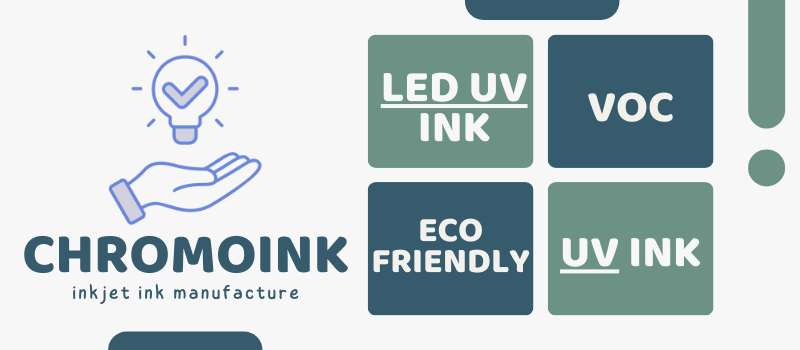

In today`s digital printing market, the choice of ink plays a crucial role in the production process, final product quality, and the company’s environmental image. UV ink and LED UV ink are currently the most popular choices, each with unique characteristics and application advantages. This article will analyze these two types of inks from multiple dimensions and provide guidance on how to choose the right one.
UV ink is a type of ink that cures rapidly under ultraviolet light, with the following features:
• Fast curing: UV ink can cure within seconds, greatly improving production efficiency.
• Strong adhesion: It provides strong adhesion to various substrates (such as plastic, metal, and paper), making it suitable for various applications.
• Excellent color performance: It delivers vivid and saturated colors, enhancing the visual appeal of printed materials.
Characteristic | |
Advantages | Fast curing, improving production efficiency |
| Strong adhesion, suitable for various substrates | |
| Excellent color performance, achieving vibrant printing effects | |
| Strong water and abrasion resistance, enhancing product durability | |
Disadvantages | May contain volatile organic compounds (VOCs), impacting the environment |
| Requires specialized UV lamps for curing, increasing equipment needs | |
| The curing process may generate high heat, potentially damaging certain materials |
LED UV ink is an ink that is cured using LED lamps, with the following key characteristics:
• Low energy consumption: LED UV ink uses less energy during the curing process, making it suitable for energy-efficient production.
• Heat-sensitive substrates: Due to the lower heat generated by LED lamps, heat-sensitive substrates (such as certain plastic materials) are less likely to be damaged.
• Environmental benefits: The curing process of LED UV ink produces almost no volatile organic compounds (VOCs), minimizing its environmental impact.
Characteristic | |
Advantages | Low energy consumption, environmentally friendly |
| Minimal impact on heat-sensitive substrates, suitable for a wide range of applications | |
| Almost no VOC emissions | |
| Long lifespan of LED lamps, reducing maintenance costs | |
Disadvantages | Higher initial equipment investment |
| Color performance on some substrates may not be as good as UV ink | |
| Limited availability of certain special colors |
Before choosing an ink, it’s essential to clarify your specific application needs:
• Printing type: Different printing types (such as packaging, labeling, and advertising) have varying performance requirements for inks.
• Substrate choice: Consider the substrates you’re using, as some inks may exhibit significant differences in adhesion and performance on certain materials.
• VOC emissions: If your company must comply with strict environmental standards, LED UV ink may be the better option.
• Sustainability: Choosing eco-friendly materials and processes can enhance your company’s brand image and market competitiveness.
• Initial investment: Compare the initial investment costs of different inks and related equipment to ensure they fit within your budget.
• Long-term operational costs: Calculate the total cost of ink usage, including the maintenance of curing equipment and energy consumption, to choose the most cost-effective solution.
Both UV ink and LED UV ink have distinct characteristics and are suitable for different production needs and market environments. Choosing the right ink can not only improve print quality but also increase production efficiency and reduce environmental impact. It is recommended that companies make informed decisions based on their needs, environmental considerations, and budget to promote sustainable business growth.